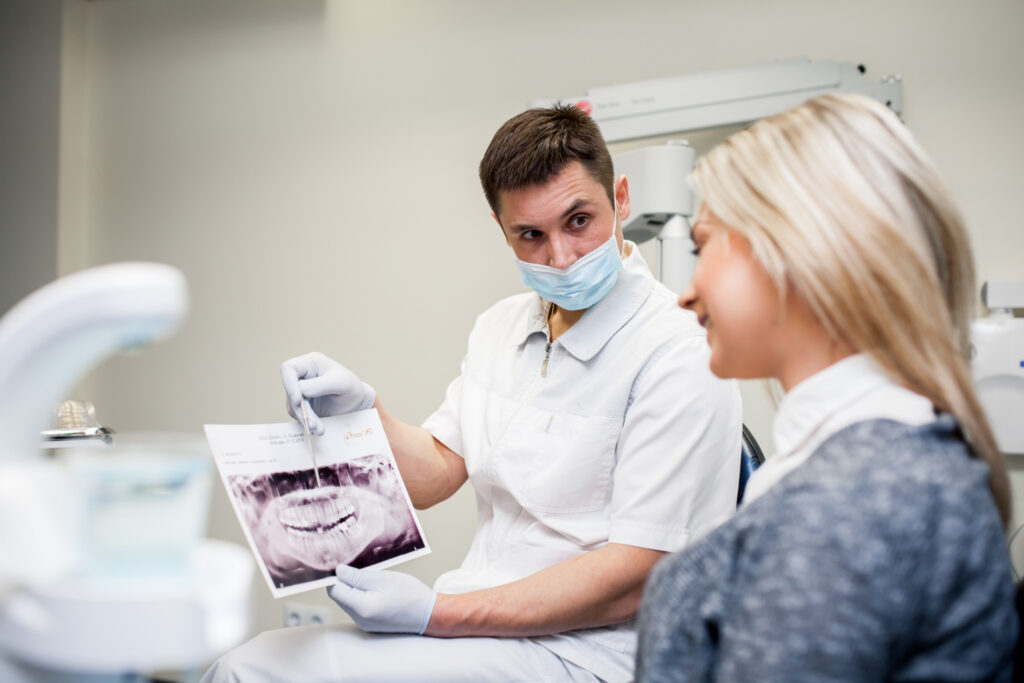Toothaches are more than just an inconvenience—they can be a sign of something more serious. Pulling a tooth is usually the most effective way to relieve pain, prevent more infections, and improve access to dental care.
If the procedure worries you, don’t worry—others feel the same way. But getting a tooth out is not difficult, and it gives you healthy oral health.
We think that being updated throughout the process helps you relax and feel secure. This guide will help you understand how the entire tooth extraction process is done.
It provides information on why an extraction might be needed, what the process includes, and suggestions to help you afterward.
What Is the Tooth Extraction Process?
The main part of the tooth extraction process is removing a tooth from its position in the jawbone. Even though it might seem scary, dental veneers are commonly placed to correct different problems. The process changes for every patient to match their tooth condition and general oral health.
Essentially, extractions can be done in two different ways.
- Simple extractions are done for teeth visible above the gum line and are simple to extract.
- Surgical Extractions – When teeth are impacted or fractured at the gum line, they may need to be removed by surgery.
People generally have their teeth extracted with local anesthesia, though sedation may be given to help them feel less anxious. All steps are designed to be as easy and peaceful as possible.
Top Reasons You Might Need a Tooth Extraction
Knowing the reasons behind tooth removal is a good idea. They are some of the main causes for such accidents.
- Extensive Tooth Damage
If the tooth’s decay is extensive and filling or root canal treatment is not a feasible option, extraction is a possibility. Removing the infected tooth helps prevent the infection from spreading to the nearby teeth or jawbone.
- Gum Infection
The underlying bone supporting your teeth can get damaged in advanced periodontal disease. This can lead to teeth getting mobile. If a tooth is no longer able to be retained, then it might need to be extracted.
- Partially Erupted Wisdom Teeth
Partially erupted wisdom teeth can be a source of infection, pain and displacement of the surrounding teeth. Surgical tooth extraction is usually the answer.
- Teeth Foundation for Orthodontics
At times, braces work to properly position teeth; some teeth may need to be removed during the preparatory phase of orthodontics.
- Teeth That Are Broken Or Cracked
Teeth can get broken due to injuries or accidents. If the tooth is in a non-repairable state, it is better to remove it for better dental health.
If you are in Raleigh and believe you could use an extraction, checking out tooth extraction Raleigh NC might be the right next step.
How to Prepare for a Tooth Extraction Appointment
Preparing before having your tooth extracted makes the procedure go more smoothly. During your visit, the dentist will use X-rays to check the surrounding bones and assess the position of your tooth.
- Medical Background and Medications
Any medical issues or medications you take should always be mentioned, particularly if they affect your immune system or lower blood pressure.
According to the Mayo Clinic, patients with certain health conditions may require antibiotics before or after the extraction to prevent infection.
- Anaesthesia and Fasting
Depending on the type of anesthesia used, your dentist might suggest that you refrain from eating or drinking for a while.
- Make a Post-Op Care Plan
If you are receiving general anesthesia or sedation, make sure an adult is able to drive you home. A few days in advance, stock up on soft foods and buy painkillers. When you are ready beforehand, the extraction will likely be simple and successful.
Tooth Extraction Procedure: Step-by-Step Breakdown
Let’s see what the tooth extraction involves so you are prepared.
Step 1: Numbing the Site
The dentist gives local anesthesia to keep the area numb during the extraction. When necessary, medicine helps your child to feel relaxed.
Step 2: Losing the Tooth
When a simple extraction is done, the elevator in the drill allows the tooth to move out easily from the socket.
Step 3: Removing the Tooth
After the tooth is loose, forceps are used to carefully extract it. Because of the numbing, this procedure tends to take little time and cause little pain.
Step 4: Extractions can be necessary (if desired).
Sometimes, a small cut in the gum is needed to remove the tooth. At times, removing part of the bone surrounding the tooth helps, or the dentist can break the tooth into bits to facilitate the pulling.
Step 5: Stitch and Wrap with Gauze
When the tooth has been removed, you may have sutures and a bit of gauze placed to stop the bleeding in the area.
The tooth extraction process is designed to keep the patient safe and comfortable.
What to Expect After a Tooth Extraction

Leaving the dentist isn’t finished until you start caring for your body to recover properly.
Normal Symptoms
Some pain, bleeding, and swelling are typical after you get the tattoo. Usually, these symptoms disappear after just a few days.
How Blood Clots
Your eye must form a blood clot as part of the healing process. This support is good for the bones and nerves, ensuring a healthy recovery.
Pain Management
Your dentist may advise you to take medicines to manage the discomfort caused by your teeth.
Learn about the stages leading up to and after an extraction process by reading Before and After Extraction.
Essential Aftercare Tips for a Smooth Recovery
Proper care after your tooth is removed decreases the chance of complications and shortens the time it takes to heal. Check out the following suggestions for the best results:
- Control Bleeding
After your wisdom teeth come out, place a gauze pad between your teeth and gently bite for at least 30–45 minutes to aid blood clotting. Change the gauze as often as is necessary.
- Reduce Swelling
For the first 24 hours, you should place an ice pack on your cheek for each 10–20-minute period.
- Pay attention to keeping your mouth clean.
Do not rinse your mouth too roughly, brush around the cavity during the first day, or use mouthwash until it has been at least 24 hours.
- Choose Simple and Delicate Foods
Focus on eating yogurt, mashed potatoes, or smoothies in the first few days.
- Avoid Sources of Risk
Avoid using straws, drinking alcohol, or smoking, or you might cause the clot to become loose and result in painful dry socket.
All these preparations are important for an easy and rapid recovery after the tooth extraction.
Conclusion
Getting a tooth removed can be scary. However, being prepared at every moment will help calm your nerves. Whether your problem is decay or wisdom tooth complications, extracting teeth is a reliable way to resolve it. Our team at New Hope Dental Care cares for you with skill and care as we help you through your dental needs.
Don’t put off seeking medical advice if you think you might need a tooth pulled. Book a consultation at New Hope Dental Care to receive the help you need from a dependable Raleigh practice.

